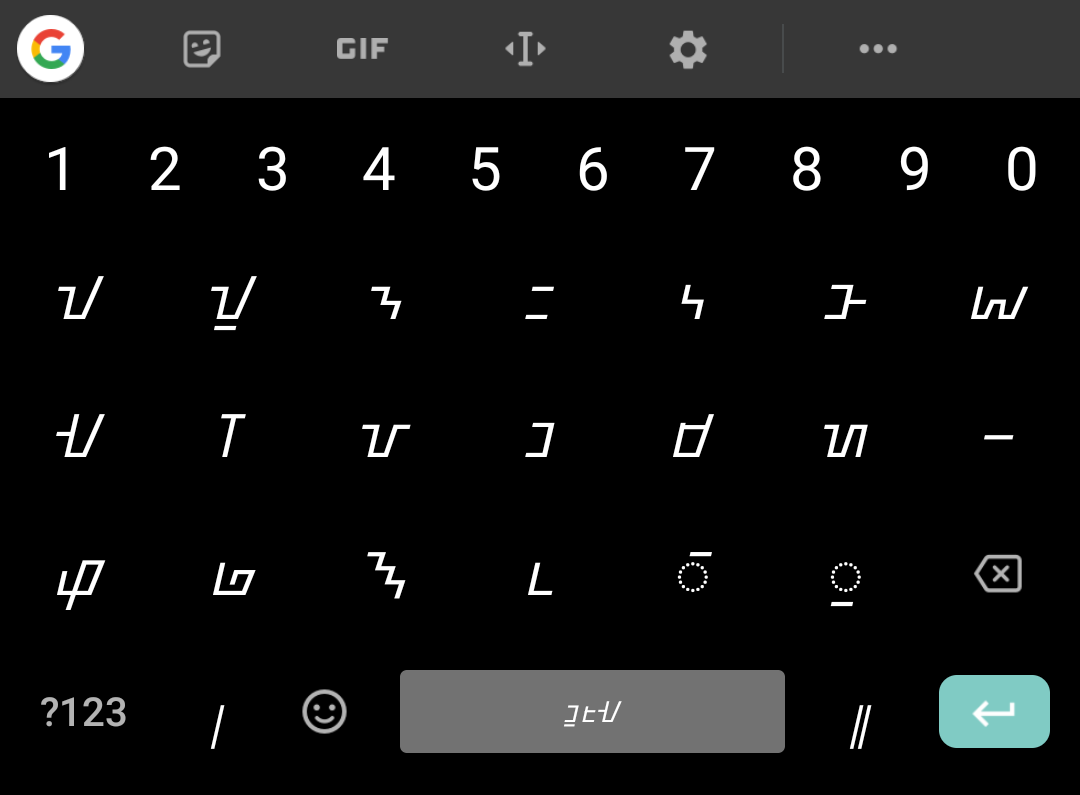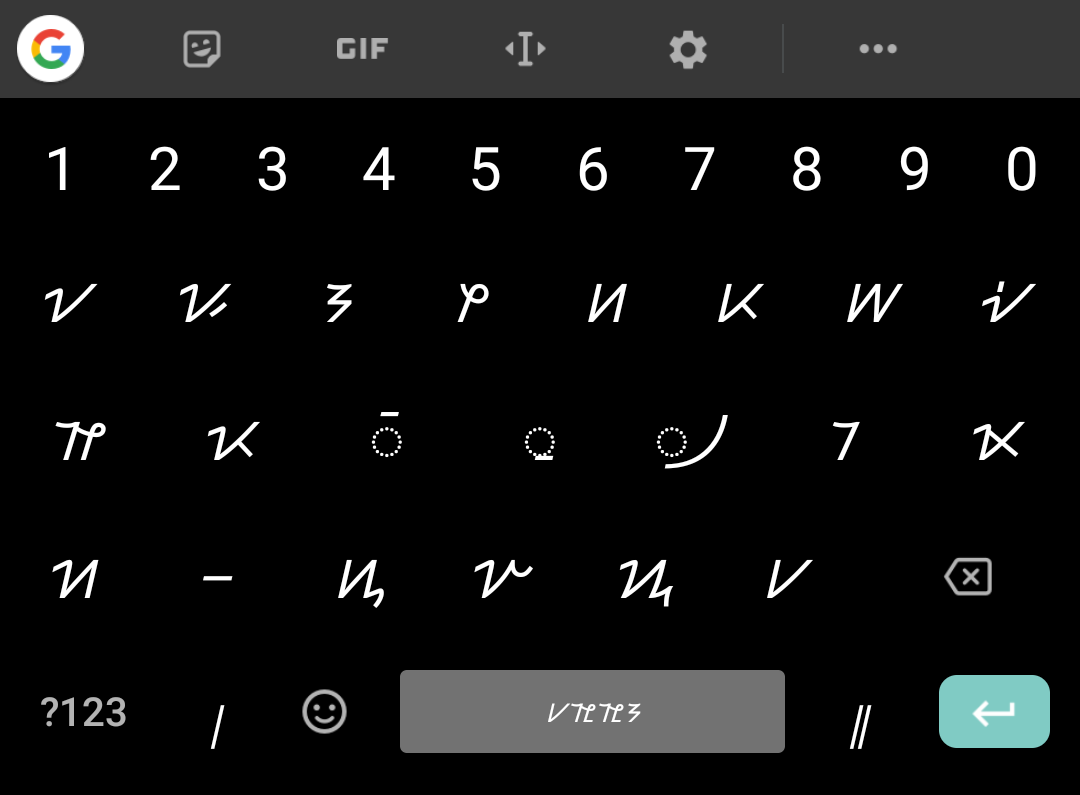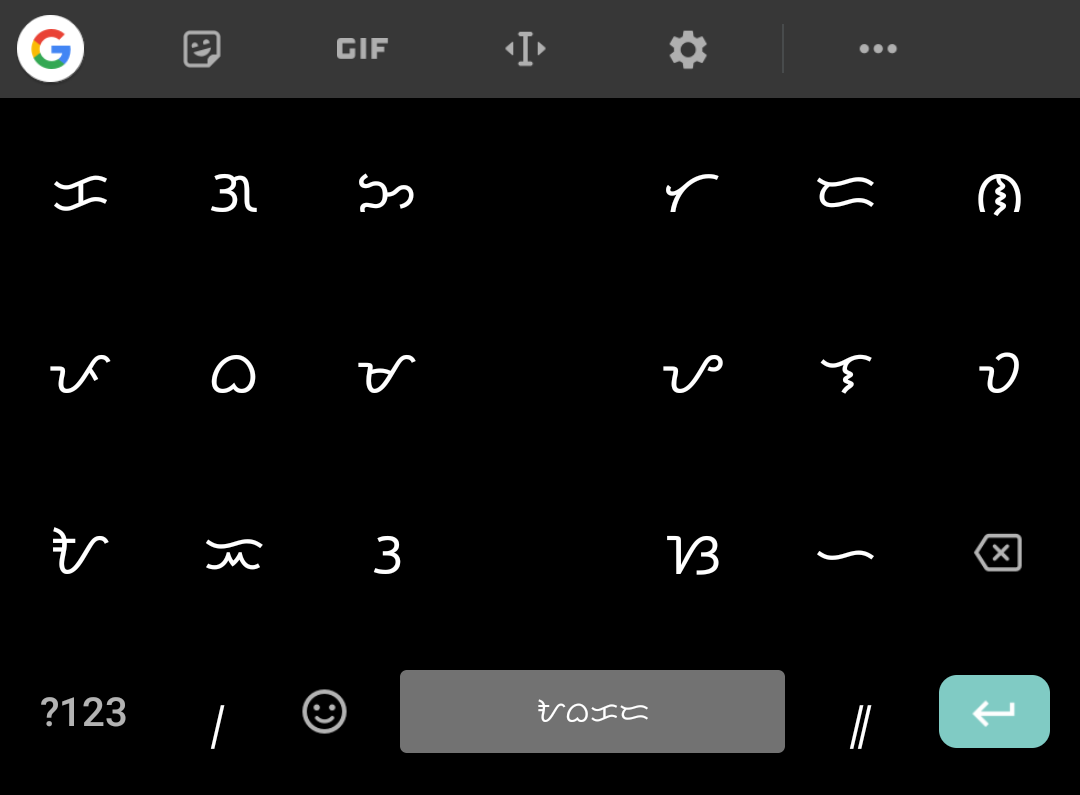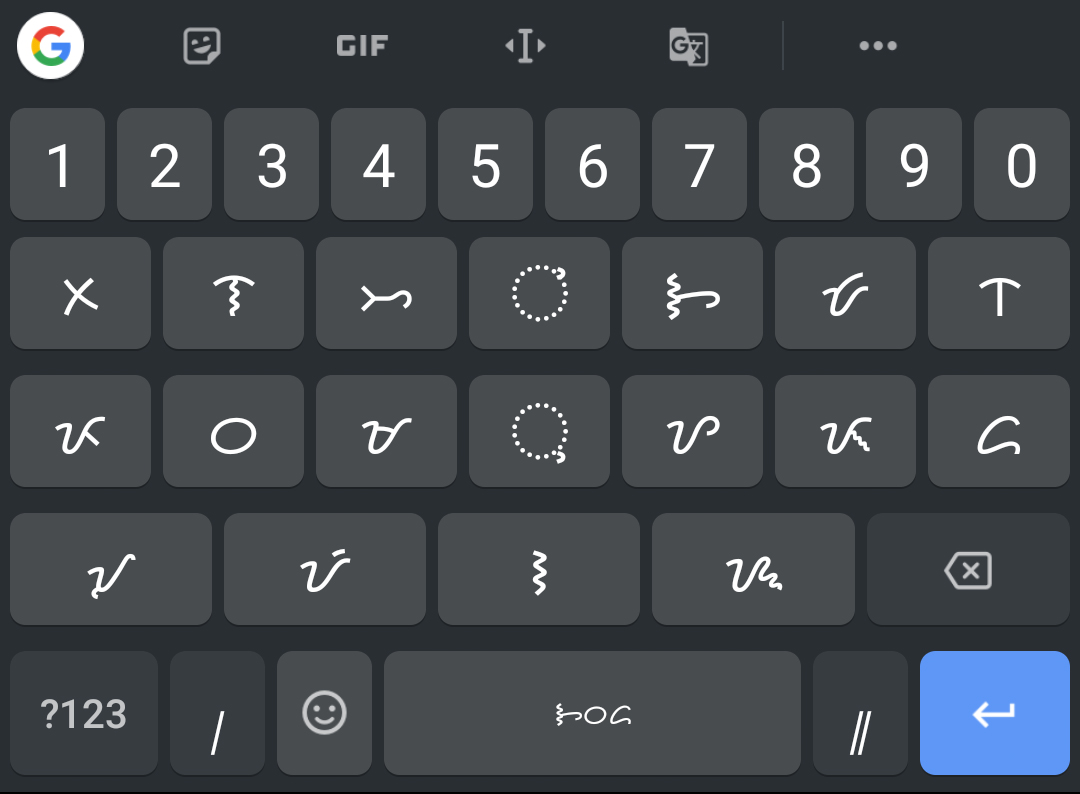
In Android 7 Nougat, the developers decided to switch to the much better Noto font family. The Noto font family have the necessarily fonts to display the Unicode code points for Baybayin-Buhid, Baybayin-Hanunoó, Baybayin-Tagalog, and Baybayin-Tagbanwa. This allowed Android 7 Nougat users to see Baybayin Unicode characters, however, to be able to type in Baybayin users have to use third-party apps or other methods … until today.
(If you want to jump to the How-To visit how to activate Baybayin in Gboard.)
Google silenty released three new Baybayin layouts for their Gboard (Google Keyboard) app for Android (not yet available in iOS). The Baybayin community first requested support when Android 7 Nougat and Gboard were released a few years back. The wait was worth it, the new layouts were well thought and studied.
For example, in Baybayin-Tagalog, the layout was split in two groups with a space in the middle. If a user taps a Baybayin-Tagalog character, the “a”, “e/i”, “o/u”, and virama diacritical marks will appear in the middle of the keyboard. This is the first time this method was used and seen in any Baybayin related keyboard layouts (mobile or desktop) and is very inspiring. Baybayin-Buhid and Baybayin-Hanunoó could use the same layout feature and hopefully in the future we will see this implemented.
Gboard
‘Change Keyboard’ menu
Gboard by I’M YourOnly.One is licensed under CC BY-SA 4.0 International.
Where is Baybayin-Tagbanwa keyboard layout? Unfortunately it is not yet available in this release. It is possible that the R&D team are still studying how best to create a layout for Tagbanwa especially since it has fewer characters of the four Unicode Baybayin code points.
2019-08-24 update: Baybayin-Tagbanwa is known as “Aborlan” in the Gboard app. Thanks to Ki Wakat for informing us.
The continued Baybayin request by the Baybayin community finally showed results. Our sincerest thanks to all and the Gboard team, especially the unique and inspiring Baybayin-Tagalog layout.
Gboard
Baybayin-Buhid layout
Gboard by I’M YourOnly.One is licensed under CC BY-SA 4.0 International.
Gboard
Baybayin-Hanunoó layout
Gboard by I’M YourOnly.One is licensed under CC BY-SA 4.0 International.
Gboard
Baybayin-Tagalog layout
Gboard by I’M YourOnly.One is licensed under CC BY-SA 4.0 International.
Gboard
Baybayin-Tagbanwa layout
Gboard by I’M YourOnly.One is licensed under CC BY-SA 4.0 International.
Download the Gboard app from the Google Play Store and Apple App Store (not yet available for iOS).
Check our How-To guide on how to activate Baybayin in Gboard.







